-
 bitcoin
bitcoin $102877.190955 USD
1.88% -
 ethereum
ethereum $3430.435064 USD
4.52% -
 tether
tether $0.999264 USD
-0.05% -
 xrp
xrp $2.307310 USD
4.49% -
 bnb
bnb $987.740692 USD
3.82% -
 solana
solana $161.947760 USD
3.97% -
 usd-coin
usd-coin $0.999712 USD
-0.05% -
 tron
tron $0.292810 USD
2.93% -
 dogecoin
dogecoin $0.179738 USD
10.70% -
 cardano
cardano $0.580716 USD
8.75% -
 hyperliquid
hyperliquid $42.463448 USD
8.40% -
 chainlink
chainlink $15.763437 USD
7.05% -
 zcash
zcash $649.595636 USD
17.21% -
 bitcoin-cash
bitcoin-cash $511.610261 USD
7.19% -
 stellar
stellar $0.292537 USD
7.91%
What is a blockchain-based domain name service like ENS?
Blockchain-based domains like ENS offer decentralized, user-owned naming tied to crypto addresses, enabling censorship-resistant websites and unified digital identities.
Nov 08, 2025 at 09:39 am
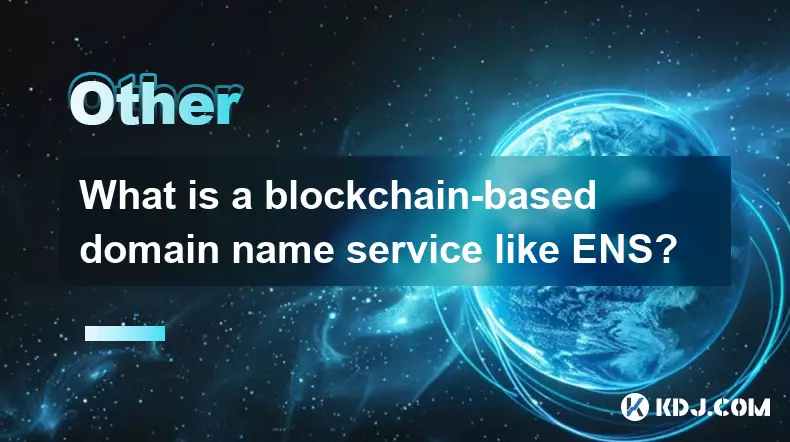
Understanding Blockchain-Based Domain Name Services
1. A blockchain-based domain name service, such as Ethereum Name Service (ENS), functions as a decentralized alternative to traditional DNS systems. Instead of relying on centralized registrars and servers, these services operate on public blockchains like Ethereum. Users can register human-readable names—such as 'alice.eth'—that map to cryptocurrency addresses, smart contracts, or even website content hosted on decentralized networks.
2. Unlike conventional domains ending in .com or .org, blockchain domains are not controlled by any single organization. Once a user registers a name via a smart contract, they retain full ownership as long as they renew it according to the protocol’s rules. This eliminates risks associated with domain seizure or censorship by third parties.
3. These domains simplify interactions in the crypto ecosystem. Rather than sharing long, complex wallet addresses like 0x742d35Cc6634C0532925a3b8D4C155Eb9cEAB7aA, users can send funds to 'bob.eth'. This reduces errors and enhances usability for both beginners and experienced participants.
4. The resolution process is secured through cryptographic verification on the blockchain. When someone types a valid ENS name into a compatible wallet or browser, the system queries the relevant smart contract to retrieve the associated data—whether that's an address, metadata, or content hash for a decentralized site.
5. Integration with Web3 infrastructure continues expanding. Major wallets, exchanges, and decentralized applications support ENS natively. As more services adopt these standards, blockchain domains become central identifiers across digital identity, access control, and asset management.
How ENS Differs from Traditional Domain Systems
1. Centralization versus decentralization defines the core distinction. Conventional domain registration depends on ICANN and accredited registrars who manage top-level domains. In contrast, ENS operates autonomously via Ethereum smart contracts, removing intermediaries from the equation.
2. Ownership rights are fundamentally different. With traditional domains, registrants license the name rather than own it outright. Blockchain domains grant actual ownership recorded immutably on-chain. No entity can revoke or alter this without the private key holder’s consent.
3. Resolution mechanisms diverge significantly. Standard DNS translates domain names into IP addresses using hierarchical server structures. ENS resolves names directly to cryptographic addresses or hashes using decentralized consensus, making it resistant to tampering and downtime.
4. Transparency and auditability are enhanced on-chain. Every ENS transaction—including registrations, transfers, and updates—is publicly verifiable. This openness supports trustless interaction and enables developers to build transparent tools around domain activity.
5. Interoperability with dApps sets blockchain domains apart. They aren’t limited to pointing at websites; they can represent identities across DeFi platforms, NFT marketplaces, and DAO governance systems, serving as unified handles for multiple services.
The Role of Smart Contracts in Domain Management
1. At the heart of ENS lies a suite of interconnected smart contracts governing registration, renewal, and resolution. The registry contract maintains a list of all domain names, their owners, resolvers, and time-to-live values, ensuring consistency across queries.
2. Resolvers act as intermediaries between names and their associated data. When a user configures their domain to point to a wallet address or IPFS hash, that information is stored in a resolver contract linked to the domain. Anyone can deploy custom resolvers, enabling extensibility.
3. The registrar contract controls how users acquire new domains. For popular suffixes like .eth, a time-based auction mechanism was initially used to prevent squatting. Now, most registrations occur via a simplified yearly payment in ETH, managed automatically by the contract.
4. Rent payments and renewals are enforced programmatically. If a user fails to renew before expiration, the domain becomes available for others to claim. This automated enforcement replaces manual oversight found in legacy systems.
The entire lifecycle—from registration to resolution—is executed without human intervention, reducing friction and eliminating points of failure inherent in administrative processes.Use Cases Beyond Cryptocurrency Addresses
1. Decentralized websites can be hosted entirely on peer-to-peer networks like IPFS and referenced through ENS. By linking a domain to a content hash, users create censorship-resistant web experiences accessible via gateways or native Web3 browsers.
2. Identity aggregation is a growing application. Individuals use ENS names as usernames across forums, social apps, and gaming platforms. Metadata attached to the domain can include profile pictures, verified social links, and reputation scores.
3. Token gating and access control leverage ENS for permissioned entry. Communities restrict membership or content visibility to holders of specific domains, creating exclusive digital spaces based on verified ownership.
4. Enterprises explore ENS for supply chain tracking and document verification. Assigning blockchain domains to physical assets allows stakeholders to authenticate provenance and update custody records securely.
As adoption grows, ENS evolves from a naming tool into a foundational layer for digital identity, enabling seamless authentication and data portability across platforms.Frequently Asked Questions
What happens if I lose access to my ENS domain?If you lose the private key to the wallet controlling your ENS domain, recovery is impossible. There is no central authority to reset ownership. Backing up seed phrases and using secure wallets is essential to maintain control.
Can I sell my ENS domain?Yes, ENS domains are transferable assets. You can sell them on NFT marketplaces like OpenSea since each registered name exists as a non-fungible token on Ethereum. Pricing depends on desirability, length, and perceived value.
Are there renewal fees for ENS domains?Yes, .eth domains require annual renewal fees paid in ETH. The cost varies based on the domain length—for example, five-character names cost less per year than shorter ones. Failure to pay results in loss of ownership.
Do ENS domains work with all cryptocurrencies?While ENS originated on Ethereum, it supports over 200+ blockchain addresses, including Bitcoin, Litecoin, and Dogecoin. Wallets and services must integrate multi-coin resolution to utilize this functionality fully.
Disclaimer:info@kdj.com
The information provided is not trading advice. kdj.com does not assume any responsibility for any investments made based on the information provided in this article. Cryptocurrencies are highly volatile and it is highly recommended that you invest with caution after thorough research!
If you believe that the content used on this website infringes your copyright, please contact us immediately (info@kdj.com) and we will delete it promptly.
- Ripple (XRP) in 2026: Hold or Fold? A Look at XRP's Future and Emerging DeFi Alternatives
- 2025-11-08 18:35:01
- Zcash ZEC Coin Price Explosion: From Privacy Niche to Center Stage
- 2025-11-08 18:55:01
- Berachain Price Prediction: Navigating the Honeycomb Hype in Crypto
- 2025-11-08 18:55:01
- Arthur Hayes, Gold, and Bitcoin: A Modern Monetary Trinity?
- 2025-11-08 19:15:01
- Shiba Inu's Next Move: Navigating a Shifting Market
- 2025-11-08 19:20:01
- Pakistan's Crypto Crossroads: Balancing Opportunity with Asset-Backed Realities
- 2025-11-08 19:20:01
Related knowledge

What is a cryptographic nonce and how is it used to prevent replay attacks?
Nov 08,2025 at 05:00pm
Understanding Cryptographic Nonces in Blockchain Systems1. A cryptographic nonce is a number used only once within a specific cryptographic communicat...
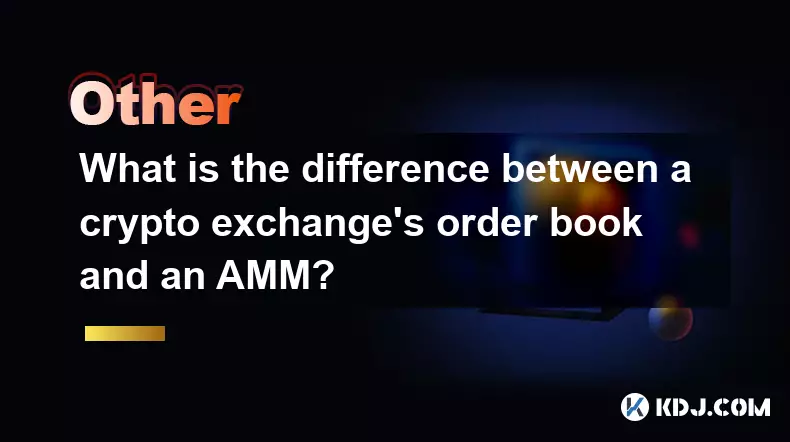
What is the difference between a crypto exchange's order book and an AMM?
Nov 09,2025 at 12:19am
Understanding the Structure of Crypto Exchange Order Books1. An order book is a real-time list of buy and sell orders for a specific cryptocurrency, o...
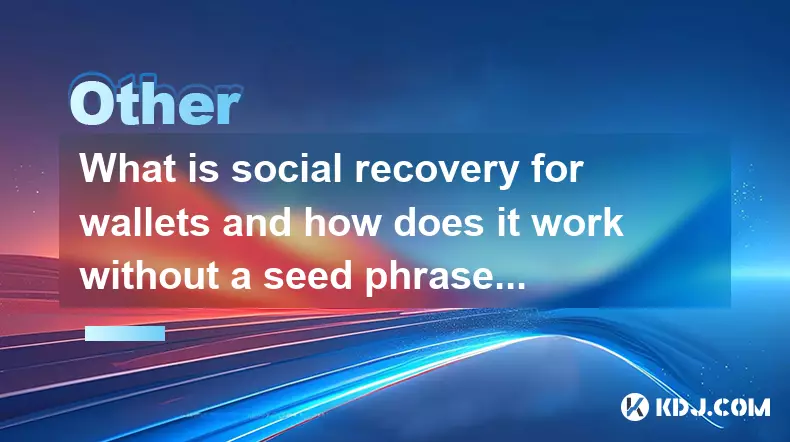
What is social recovery for wallets and how does it work without a seed phrase?
Nov 08,2025 at 08:39am
Social Recovery in Cryptocurrency Wallets1. Social recovery is a mechanism designed to help users regain access to their cryptocurrency wallets withou...
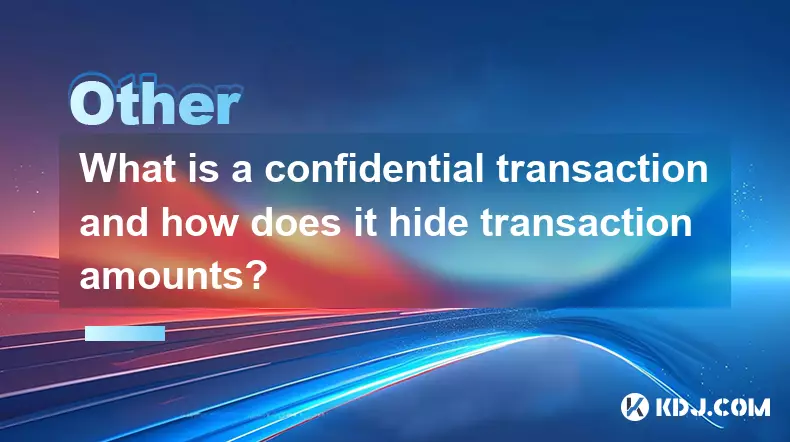
What is a confidential transaction and how does it hide transaction amounts?
Nov 08,2025 at 07:19pm
Understanding Confidential Transactions in Cryptocurrency1. Confidential transactions are a cryptographic method used in certain blockchain networks t...

What is a data availability layer and how does it help rollups become more secure and cheaper?
Nov 08,2025 at 08:39pm
What Is a Data Availability Layer?1. A data availability layer is a foundational component in blockchain infrastructure designed to ensure that transa...
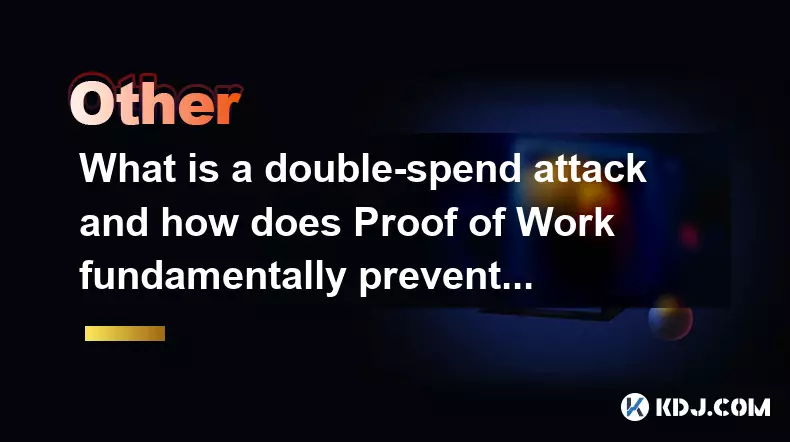
What is a double-spend attack and how does Proof of Work fundamentally prevent it?
Nov 08,2025 at 08:19pm
Understanding the Double-Spend Problem in Cryptocurrencies1. In digital cash systems, a fundamental challenge arises when a user attempts to spend the...

What is a cryptographic nonce and how is it used to prevent replay attacks?
Nov 08,2025 at 05:00pm
Understanding Cryptographic Nonces in Blockchain Systems1. A cryptographic nonce is a number used only once within a specific cryptographic communicat...

What is the difference between a crypto exchange's order book and an AMM?
Nov 09,2025 at 12:19am
Understanding the Structure of Crypto Exchange Order Books1. An order book is a real-time list of buy and sell orders for a specific cryptocurrency, o...

What is social recovery for wallets and how does it work without a seed phrase?
Nov 08,2025 at 08:39am
Social Recovery in Cryptocurrency Wallets1. Social recovery is a mechanism designed to help users regain access to their cryptocurrency wallets withou...

What is a confidential transaction and how does it hide transaction amounts?
Nov 08,2025 at 07:19pm
Understanding Confidential Transactions in Cryptocurrency1. Confidential transactions are a cryptographic method used in certain blockchain networks t...

What is a data availability layer and how does it help rollups become more secure and cheaper?
Nov 08,2025 at 08:39pm
What Is a Data Availability Layer?1. A data availability layer is a foundational component in blockchain infrastructure designed to ensure that transa...

What is a double-spend attack and how does Proof of Work fundamentally prevent it?
Nov 08,2025 at 08:19pm
Understanding the Double-Spend Problem in Cryptocurrencies1. In digital cash systems, a fundamental challenge arises when a user attempts to spend the...
See all articles





















![The Graph Price Prediction [GRT Crypto Price News Today] The Graph Price Prediction [GRT Crypto Price News Today]](/uploads/2025/11/07/cryptocurrencies-news/videos/690d4df44fe69_image_500_375.webp)



















































